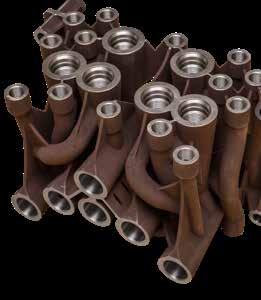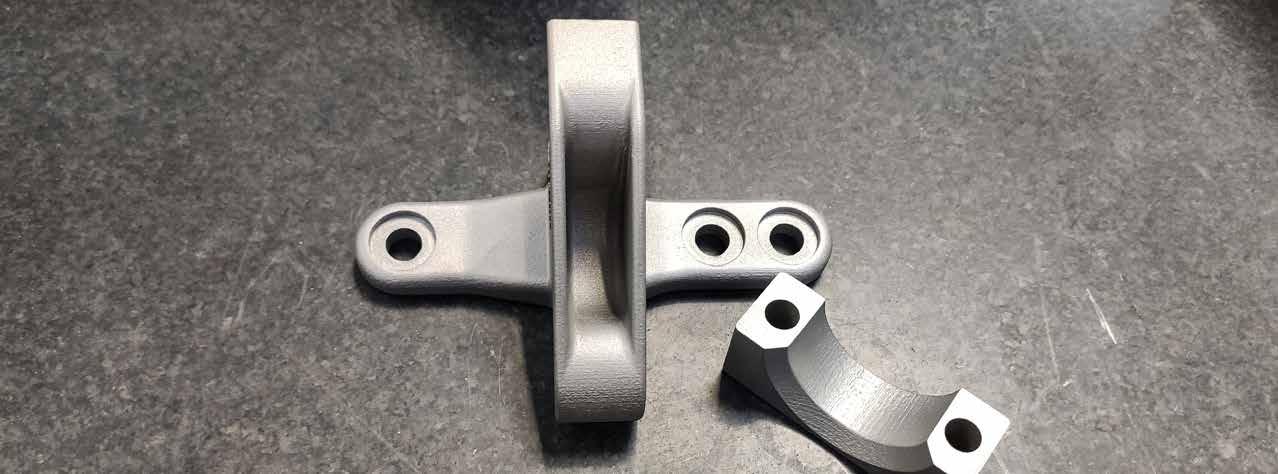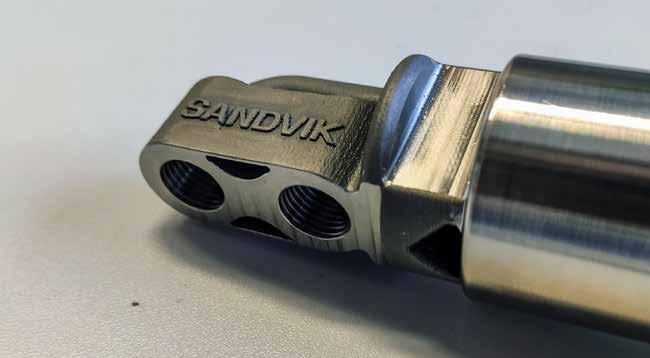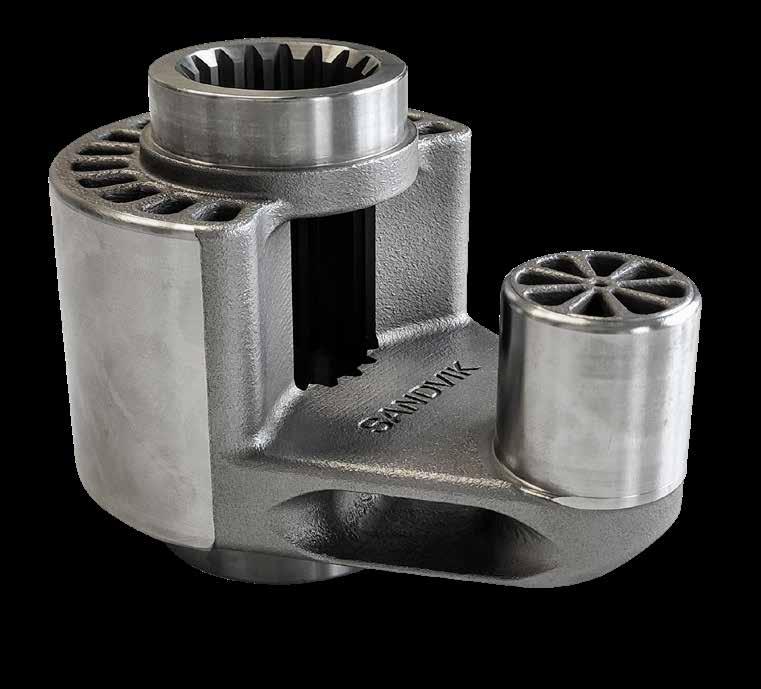
2 minute read
SMART PARTS
For millennia, humankind has made use of subtractive and formative technologies, such as casting, forging and turning, to make useful products out of metal. Now there is a new alternative: additive manufacturing, also known as additive shaping or 3D printing. Sandvik is scouting this novel territory to optimize its global supply chains and to offer new advantages to its customers.
ADDITIVE MANUFACTURING (AM) is clearly an enabling technology with major potential in terms of benefits such as lower material use, lower tooling costs and shorter lead times. The value of AM parts is expected to grow at a compound annual growth rate of 15 percent, from USD 12 billion in 2020 to USD 51 billion in 2030. This alone makes it understandable that Sandvik sees AM as a potential tool for optimizing global supply chains. With its longtime world-leading position in metal powder and the widest range of AM alloys on the market, Sandvik has, since 2013, made sizeable investments into a broad range of AM printing technologies. In 2019 Sandvik acquired a significant stake in BEAMIT, the first AM hub in Europe. Together, both companies have leading expertise across the entire AM value chain.
“You need to have real value to shift from conventional manufacturing to
AM. The overall focus is on finding the right application technology for your organization and then prove it on business case,” says Abhijit Bhalgat, deputy general manager for parts sourcing in India, Sandvik Mining and Rock Solutions. He has led this additive manufacturing initiative of Sandvik Mining and Rock Solutions since November 2017 and, together with his team, redesigned the parts for AM and calculated and validated the business cases to ensure value addition by shifting from conventional processes to AM and implementing it into serial production.
The value challenge is that a simple replication of parts designed for welding or casting by AM will almost invariably result in a prohibitive cost, mainly due to the higher hourly production cost and more expensive materials. The challenging cost structure must be justified with substantial benefits. A business case for AM exists when it creates a unique advantage in terms of productivity, lead time or logistics, or enables a complex geometry that is not achievable with conventional processes.

THE KEY TOOL to achieve this is topological optimization, in other words redesigning the part to remove any unstressed, non-functional masses and leaving only the structures necessary for transiting loads. This can cut back the weight of the component by 50 percent on average, and in some cases up to 85 percent.
Another key factor for the feasibility of AM is the number of components to be produced. The shorter the production run, the more
Benefits Of Additive Manufacturing Parts



Faster market entry for new products and parts
Faster lead times for spare parts
Better availability of legacy parts
Part production closer to users
Lower logistics costs and reduced CO2 footprint relevant AM is because the economies of scale inherent in conventional technologies require large production quantities. Conversely, the possibility to eliminate most of the conventional tooling costs can be crucial in lowvolume parts.
“The objective of Sandvik’s AM initiative was to improve our customer service as well as to explore the added value this technology can bring in individual business cases,” Bhalgat says.
ANOTHER DRIVER WAS the heavily localized geographic footprint of spare parts production: 92 percent of Sandvik Mining and Rock Solutions’ spares are made in the EU and North America, with Finland alone accounting for 50 percent. However, the primary markets are in Australia, South Africa, the Americas, Russia and India. Combined with a long tail of legacy parts sourced









